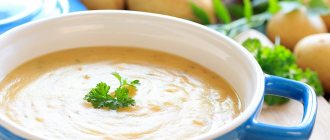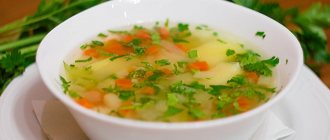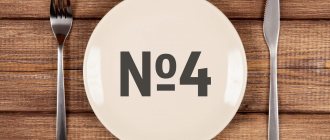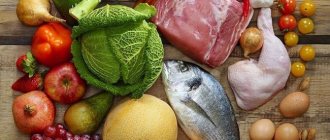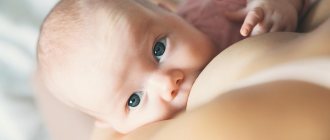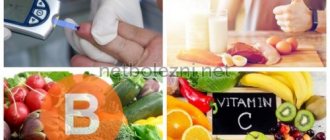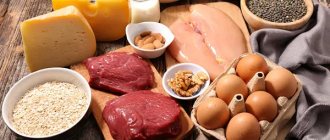General rules
Dietary Table No. 13 is prescribed for infectious diseases, pneumonia , bronchitis and suppurative lung diseases.
The purpose of its purpose is to increase the body's resistance to the infectious process, maintain general strength, and reduce intoxication. Any infectious disease is accompanied by fever , therefore the metabolic rate increases and, accordingly, the need for energy increases.
In conditions of a febrile state and the patient is on bed rest, it is necessary to spare the digestive organs (mechanical, chemical and thermal). Fractional meals are required in small portions, so meals are organized 6 times a day. Food is prepared pureed or chopped, it is boiled in water (steamed). Do not fry, stew or bake. Cold dishes must be at least 15°C in temperature, and hot dishes must be at least 65°C.
This therapeutic food has a reduced energy value since the content of fats and carbohydrates is reduced, and proteins are slightly reduced. According to the chemical composition: protein content 70 g (preference is given to milk proteins), fats 60-70 g and carbohydrates 300 g (of which 30% are easily digestible). Energy value is 2000-2100 kcal. The diet is characterized by a high content of vitamins and fluids. Free fluid is allowed to take 2 liters (in some cases more). It is this drinking regime that accelerates the elimination of toxins and, in general, quickly alleviates the patient’s condition.
Table salt is allowed 6-10 g, its amount is increased with excessive vomiting or sweating. The diet excludes coarse fiber, indigestible, fatty and salty foods. Preference is given to easily digestible dishes that do not cause flatulence and constipation .
When preparing your diet, it is important to follow the following rules:
- Do not allow the patient to go hungry during fever. It is necessary to provide a sufficient amount of food, but in fractional portions;
- overfeeding is contraindicated, even if the patient has an appetite;
- reduce fat content to the lower limit of normal, since they are difficult to digest;
- amount of proteins: at the rate of 1 g per kg of weight, but their amount is increased in case of protein-energy deficiency;
- exclude foods that mechanically irritate the gastrointestinal tract;
- monitor bowel function. For constipation, include laxative foods (raw vegetable juices, sugar, honey, boiled beets, prunes), and for diarrhea - limit sugar, exclude milk and cold drinks;
- for kidney symptoms, exclude strong broths, spices and extractives;
- introduce in small quantities or completely eliminate substances that irritate the nervous system (coffee, strong tea, rich broth).
The diet includes:
- low-fat milk, fermented milk products, cottage cheese, unsalted grated cheese;
- lean types of meat and fish;
- easily digestible cereals;
- non-rough vegetables and fruits;
- weak tea, rosehip decoction, still mineral water. Drinking regimen - 2-2.5 liters per day;
- Brewer's yeast;
- butter and vegetable oil (15 g per day);
- taking into account the increasing need for vitamins, include foods rich in vitamin C (rose hips, currants, sea buckthorn, citrus fruits), vitamin A (grained caviar, liver, egg yolks, butter), vitamin B2 (offal, yeast, cottage cheese, almonds), vitamin B6 (meat, rice, millet, potatoes).
Products to be excluded:
- causing flatulence ;
- hot seasonings and sauces (horseradish, mustard, mayonnaise, ketchup);
- concentrated broths;
- fat meat;
- salted and pickled vegetables;
- containing artificial colors.
Nutrition rules
Infectious diseases greatly deplete the body, and in combination with antibiotics, they significantly weaken it. In case of bronchitis, pneumonia or other diseases, it is important to compensate for the lack of vitamins and microelements that will strengthen the immune system and prevent re-infection.
Diet No. 13 makes it as easy as possible to absorb nutrients from food and at the same time is quite high in calories. This therapeutic diet also promotes detoxification, removing excess fluid from the body.
The diet excludes hard-to-digest foods, as well as foods that cause increased gas formation and fermentation processes in the intestines. The patient's diet should consist of foods rich in vitamins and protein. The volume of liquids increases, 2-2.5 liters per day.
During cooking, food must be subjected to three types of care:
- Chemical. That is, the composition of the food should be as easily digestible as possible. First courses should be light, low in fat, with well-cooked vegetables. All food should not irritate the digestive organs and have a positive effect on the nervous system. Spicy, sour, and highly salty foods are excluded.
- Mechanical sparing is necessary to ensure a certain consistency of dishes. On the thirteenth diet, food is supposed to be well ground, wiped, and boiled. Food should be a homogeneous mass, in the form of porridges and purees. Frying and baking are prohibited; recipes for dietary dishes should consist of boiled or steamed products.
- Thermal sparing ensures the optimal temperature of cooked food. Cold drinks and dishes must have a temperature of no lower than 15°C, hot drinks – no higher than 65°C.
Portions of meals should be small and food should be eaten at regular intervals. It is advisable to plan your diet so that you have 6 small meals per day.
The amount of salt for a patient depends on his condition. If the disease is not accompanied by vomiting or profuse sweating, up to 10 g of sodium chloride per day is recommended. If complications of the disease lead to fluid loss, the amount of salt is increased slightly. For swelling, irregular bowel movements, and a constant feeling of thirst, the amount of salt is reduced to 6 g.
To cleanse the body and remove harmful substances, you need to increase the volume of water consumed. Compliance with such a drinking regime reduces intoxication and replenishes the body’s water balance. It is not recommended to drink during meals and before bedtime.
Authorized Products
Diet No. 13, Table No. 13 includes:
- Wheat bread (highest grade), it should be dried, maybe crackers.
- Soups are prepared weak and low-fat. You can have meat and fish with egg flakes or quenelles. You can prepare pureed meat soups, slimy soups with boiled cereals (semolina, rice, oatmeal). You can also season with noodles and add vegetables.
- Low-fat varieties of fish are recommended (boiled, steamed, in pieces and minced). The skin is removed because it is difficult to digest.
- Meat and poultry are also low-fat varieties, steamed, in the form of boiled meat soufflé, steamed meatballs and cutlets.
- Before processing, meat and poultry are stripped of fat, tendons, fascia and skin.
- Fermented milk drinks (yogurt, kefir, yogurt, acidophilus), milk, cottage cheese, mild cheese (tinder), and sour cream are added to dishes.
- Eggs are allowed soft-boiled or scrambled eggs.
- Cereals (buckwheat, rice, oatmeal) are well boiled and semi-liquid, viscous porridge is obtained. To breed them, broth or milk is used.
- Vegetables (potatoes, beets, carrots, cauliflower, pumpkin) are prepared as side dishes. They are boiled, made into purees, stews, caviar, soufflés, and steam puddings.
- Only after recovery, salads from fresh vegetables (grated carrots, cucumbers, tomatoes, cabbage, radishes) are included in the diet.
- Fresh fruits may not be hard; the rest are subjected to heat or mechanical processing (purees, mousses, jelly).
- Fresh diluted (1:1) juices, compotes, jelly, fruit drinks, jam, confiture are recommended.
- Recommended drinks include: weak tea with lemon and coffee with milk, rosehip infusion.
- Sugar, jam, jam, honey, marmalade are allowed.
- Yeast contains B vitamins, proteins, biotin , pantothenic , folic acid , minerals and is very useful for these conditions. You can prepare a yeast additive for dishes. Place the yeast in a saucepan, add water (2.5 times more), simmer in a water bath, stirring. After 45, the “dish” is ready. After cooling, they are added to all dishes.
Table of permitted products
| Proteins, g | Fats, g | Carbohydrates, g | Calories, kcal | |
Vegetables and greens | ||||
| zucchini | 0,6 | 0,3 | 4,6 | 24 |
| cauliflower | 2,5 | 0,3 | 5,4 | 30 |
| carrot | 1,3 | 0,1 | 6,9 | 32 |
| beet | 1,5 | 0,1 | 8,8 | 40 |
| pumpkin | 1,3 | 0,3 | 7,7 | 28 |
Fruits | ||||
| apricots | 0,9 | 0,1 | 10,8 | 41 |
| avocado | 2,0 | 20,0 | 7,4 | 208 |
| oranges | 0,9 | 0,2 | 8,1 | 36 |
| watermelon | 0,6 | 0,1 | 5,8 | 25 |
| bananas | 1,5 | 0,2 | 21,8 | 95 |
| melon | 0,6 | 0,3 | 7,4 | 33 |
| lime | 0,9 | 0,1 | 3,0 | 16 |
| lemons | 0,9 | 0,1 | 3,0 | 16 |
| tangerines | 0,8 | 0,2 | 7,5 | 33 |
| plums | 0,8 | 0,3 | 9,6 | 42 |
| apples | 0,4 | 0,4 | 9,8 | 47 |
Berries | ||||
| cowberry | 0,7 | 0,5 | 9,6 | 43 |
| strawberry | 0,8 | 0,4 | 7,5 | 41 |
| cranberry | 0,5 | 0,0 | 6,8 | 26 |
| sea buckthorn | 1,2 | 5,4 | 5,7 | 82 |
| currant | 1,0 | 0,4 | 7,5 | 43 |
| rose hip | 1,6 | 0,0 | 14,0 | 51 |
Nuts and dried fruits | ||||
| raisin | 2,9 | 0,6 | 66,0 | 264 |
| dates | 2,5 | 0,5 | 69,2 | 274 |
Cereals and porridges | ||||
| buckwheat (kernel) | 12,6 | 3,3 | 62,1 | 313 |
| cereals | 11,9 | 7,2 | 69,3 | 366 |
| white rice | 6,7 | 0,7 | 78,9 | 344 |
Confectionery | ||||
| jam | 0,3 | 0,2 | 63,0 | 263 |
| jam | 0,3 | 0,1 | 56,0 | 238 |
| jelly | 2,7 | 0,0 | 17,9 | 79 |
| fruit and berry marmalade | 0,4 | 0,0 | 76,6 | 293 |
Raw materials and seasonings | ||||
| honey | 0,8 | 0,0 | 81,5 | 329 |
| sugar | 0,0 | 0,0 | 99,7 | 398 |
| milk sauce | 2,0 | 7,1 | 5,2 | 84 |
| sour cream sauce | 1,9 | 5,7 | 5,2 | 78 |
Dairy | ||||
| milk 1.5% | 2,8 | 1,5 | 4,7 | 44 |
| kefir 1% | 2,8 | 1,0 | 4,0 | 40 |
| sour cream 15% (low fat) | 2,6 | 15,0 | 3,0 | 158 |
| curdled milk | 2,9 | 2,5 | 4,1 | 53 |
| acidophilus | 2,8 | 3,2 | 3,8 | 57 |
| yogurt | 4,3 | 2,0 | 6,2 | 60 |
Cheeses and cottage cheese | ||||
| cottage cheese 0.6% (low fat) | 18,0 | 0,6 | 1,8 | 88 |
Meat products | ||||
| boiled beef | 25,8 | 16,8 | 0,0 | 254 |
| boiled veal | 30,7 | 0,9 | 0,0 | 131 |
| rabbit | 21,0 | 8,0 | 0,0 | 156 |
Bird | ||||
| boiled chicken | 25,2 | 7,4 | 0,0 | 170 |
| turkey | 19,2 | 0,7 | 0,0 | 84 |
Eggs | ||||
| chicken eggs | 12,7 | 10,9 | 0,7 | 157 |
Fish and seafood | ||||
| Red caviar | 32,0 | 15,0 | 0,0 | 263 |
| black caviar | 28,0 | 9,7 | 0,0 | 203 |
| chum salmon caviar grainy | 31,6 | 13,8 | 0,0 | 251 |
Oils and fats | ||||
| peasant unsalted butter | 1,0 | 72,5 | 1,4 | 662 |
| corn oil | 0,0 | 99,9 | 0,0 | 899 |
| olive oil | 0,0 | 99,8 | 0,0 | 898 |
| sunflower oil | 0,0 | 99,9 | 0,0 | 899 |
| ghee | 0,2 | 99,0 | 0,0 | 892 |
Non-alcoholic drinks | ||||
| mineral water | 0,0 | 0,0 | 0,0 | — |
| lingonberry juice | 0,1 | 0,0 | 10,7 | 41 |
| green tea | 0,0 | 0,0 | 0,0 | — |
Juices and compotes | ||||
| apricot juice | 0,9 | 0,1 | 9,0 | 38 |
| carrot juice | 1,1 | 0,1 | 6,4 | 28 |
| pumpkin juice | 0,0 | 0,0 | 9,0 | 38 |
| rose hip juice | 0,1 | 0,0 | 17,6 | 70 |
| * data is per 100 g of product | ||||
What is possible, what is not
For a speedy recovery, diet No. 13 obliges you to include easily digestible foods in the menu that do not contribute to flatulence and constipation. Allowed:
- Day-old wheat bread and crackers from it, biscuits;
- Slimy and ground porridges made from oatmeal, buckwheat, rice and semolina;
- Pasta as a separate side dish, as an additive to mashed potatoes or the basis of a casserole;
- Soups based on mucous and vegetable broths, light fish and meat broths;
- Low fat dairy products - kefir, yogurt, cottage cheese, unsalted cheese, sour cream. Whole milk and cream can only be used as ingredients in dishes;
- Low-fat varieties of meat and fish, boiled and baked, various ground and mushy dishes;
- Eggs no more than 2 per day;
- Fresh and thermally processed vegetables;
- Soft, ripe and sweet fruits in the form of souffles, purees or mousses;
- Sweets in limited quantities - jam, jam, honey, pastille, meringue, marmalade;
- Butter and cold-pressed oils up to 100-150 grams per week;
- Black and green tea, chamomile and rosehip decoction, weakly concentrated juices, jelly, compotes, fruit drinks.
Diet table number 13 excludes foods that are difficult for the stomach from your diet. The following are prohibited:
- Hot baked goods;
- Barley, millet, pearl barley and corn cereals;
- Legumes - peas, lentils, chickpeas, beans;
- High-fat dairy products, gastronomic yoghurts and curds with various fillings;
- Fatty meats and rich broths made from them;
- Vegetables - cucumbers, onions, garlic, white cabbage and radishes;
- Unripe and sour berries, fruits, with a predominance of fiber;
- Marinades and pickles;
- Spicy and smoked dishes;
- Chocolate, cocoa, confectionery with cream fillings;
- Sweet carbonated drinks, alcohol.
Fully or partially limited products
- Rye bread and pastries, fresh bread.
- Fatty concentrated broths and soups based on them, as well as cabbage soup, borscht, since they contain a large amount of cabbage, which causes flatulence .
- Sausage, smoked meats, canned food (meat and fish).
- Fatty meat, poultry, fatty fish.
- You should not eat fried or hard-boiled eggs.
- If possible, all food is prepared without vegetable oil, and it is added to dishes.
- Whole milk and cream are not allowed, fatty sour cream and fatty cheeses are excluded.
- You should not eat coarse and poorly digestible cereals (millet, pearl barley, barley), as well as pasta.
- Products that cause increased gas formation: white cabbage, cauliflower, radishes, legumes. They are not allowed to be consumed even in soups and stews.
- Fruits with rough skin (rich in fiber).
- All products and dishes that have an irritating effect: hot seasonings, sauces (mayonnaise, ketchup), horseradish, mustard, smoked, salted and pickled foods.
- Strong coffee and tea are not recommended; alcoholic drinks and carbonated drinks are prohibited.
Table of prohibited products
| Proteins, g | Fats, g | Carbohydrates, g | Calories, kcal | |
Vegetables and greens | ||||
| spicy vegetables | 2,8 | 0,5 | 5,3 | 36 |
| vegetables legumes | 9,1 | 1,6 | 27,0 | 168 |
| canned vegetables | 1,5 | 0,2 | 5,5 | 30 |
| swede | 1,2 | 0,1 | 7,7 | 37 |
| cabbage | 1,8 | 0,1 | 4,7 | 27 |
| sauerkraut | 1,8 | 0,1 | 4,4 | 19 |
| cauliflower | 2,5 | 0,3 | 5,4 | 30 |
| bulb onions | 1,4 | 0,0 | 10,4 | 41 |
| cucumbers | 0,8 | 0,1 | 2,8 | 15 |
| canned cucumbers | 2,8 | 0,0 | 1,3 | 16 |
| pickles | 0,8 | 0,1 | 1,7 | 11 |
| radish | 1,2 | 0,1 | 3,4 | 19 |
| white radish | 1,4 | 0,0 | 4,1 | 21 |
| turnip | 1,5 | 0,1 | 6,2 | 30 |
| celery | 0,9 | 0,1 | 2,1 | 12 |
| tomatoes | 0,6 | 0,2 | 4,2 | 20 |
| canned tomatoes | 1,1 | 0,1 | 3,5 | 20 |
| horseradish | 3,2 | 0,4 | 10,5 | 56 |
| garlic | 6,5 | 0,5 | 29,9 | 143 |
| sorrel | 1,5 | 0,3 | 2,9 | 19 |
Fruits | ||||
| pears | 0,4 | 0,3 | 10,9 | 42 |
Berries | ||||
| grape | 0,6 | 0,2 | 16,8 | 65 |
Mushrooms | ||||
| mushrooms | 3,5 | 2,0 | 2,5 | 30 |
| marinated mushrooms | 2,2 | 0,4 | 0,0 | 20 |
Cereals and porridges | ||||
| corn grits | 8,3 | 1,2 | 75,0 | 337 |
| pearl barley | 9,3 | 1,1 | 73,7 | 320 |
| millet cereal | 11,5 | 3,3 | 69,3 | 348 |
| barley grits | 10,4 | 1,3 | 66,3 | 324 |
Bakery products | ||||
| Rye bread | 6,6 | 1,2 | 34,2 | 165 |
Confectionery | ||||
| cake | 3,8 | 22,6 | 47,0 | 397 |
Chocolate | ||||
| chocolate | 5,4 | 35,3 | 56,5 | 544 |
Raw materials and seasonings | ||||
| mustard | 5,7 | 6,4 | 22,0 | 162 |
| ketchup | 1,8 | 1,0 | 22,2 | 93 |
| mayonnaise | 2,4 | 67,0 | 3,9 | 627 |
| ground black pepper | 10,4 | 3,3 | 38,7 | 251 |
| soy sauce | 3,5 | 0,0 | 11,0 | 58 |
| vinegar | 0,0 | 0,0 | 5,0 | 20 |
Dairy | ||||
| milk 4.5% | 3,1 | 4,5 | 4,7 | 72 |
| cream | 2,8 | 20,0 | 3,7 | 205 |
Meat products | ||||
| pork | 16,0 | 21,6 | 0,0 | 259 |
Bird | ||||
| smoked chicken | 27,5 | 8,2 | 0,0 | 184 |
| duck | 16,5 | 61,2 | 0,0 | 346 |
| smoked duck | 19,0 | 28,4 | 0,0 | 337 |
| goose | 16,1 | 33,3 | 0,0 | 364 |
Fish and seafood | ||||
| dried fish | 17,5 | 4,6 | 0,0 | 139 |
| smoked fish | 26,8 | 9,9 | 0,0 | 196 |
| canned fish | 17,5 | 2,0 | 0,0 | 88 |
Oils and fats | ||||
| animal fat | 0,0 | 99,7 | 0,0 | 897 |
| cooking fat | 0,0 | 99,7 | 0,0 | 897 |
Non-alcoholic drinks | ||||
| cola | 0,0 | 0,0 | 10,4 | 42 |
| lemonade | 0,0 | 0,0 | 6,4 | 26 |
| Pepsi | 0,0 | 0,0 | 8,7 | 38 |
| sprite | 0,1 | 0,0 | 7,0 | 29 |
| black tea | 20,0 | 5,1 | 6,9 | 152 |
Juices and compotes | ||||
| tomato juice | 1,1 | 0,2 | 3,8 | 21 |
| * data is per 100 g of product | ||||
The essence of the diet
Table number 13 according to Pevzner supports the overall strength of the body, helps reduce intoxication and increases resistance to various infectious diseases.
During bed rest, the diet has a low energy value - 2000-2300 calories. In her menu, the amount of carbohydrates and fats consumed is reduced, while the amount of fortified foods is increased.
Chemical composition of the daily diet:
- Carbohydrates – 300-350 grams;
- Proteins – 70-80 grams (30-40% vegetable);
- Fats – 60-70 grams (80% animals).
The table allows adding table salt to food in the amount of 8-10 grams.
The volume of free fluid intake should be as high as possible. The patient must drink at least 2 liters of pure non-carbonated water per day, in addition to teas, juices, compotes and soups.
Diet menu table 13 (diet mode)
Based on the permitted products, you can create a menu and make your meals varied, since only some products are limited. There is no restriction on salt, and minor restrictions on spices will not affect the taste of the dishes. Milk and sour cream sauces will brighten up some of the monotony of steamed dishes. The menu may change depending on the severity of the disease.
In the midst of acute pneumonia, the amount of food taken decreases. For the whole day, 200 g of bread and 100 g of yeast are allowed.
| Breakfast |
|
| Lunch |
|
| Dinner |
|
| Afternoon snack |
|
| Dinner |
|
| For the night |
|
For suppurative lung diseases, nutrition is almost complete. For the whole day, 400 g of wheat bread, 20 g of sugar, 100 g of yeast.
| Breakfast |
|
| Lunch |
|
| Dinner |
|
| Afternoon snack |
|
| Dinner |
|
| For the night |
|
The diet for acute bronchitis is also not much different from the usual diet.
| Breakfast |
|
| Lunch |
|
| Dinner |
|
| Afternoon snack |
|
| Dinner |
|
| For the night |
|
Menu and recipes for diet
Since the list of prohibited foods is wide, it is recommended to create a menu in advance. Planning will allow you to select suitable recipes in time and stock up on the necessary ingredients.
The weekly menu for table No. 13 may look like this.
Monday
In the morning: pureed buckwheat with rabbit meatballs.
Snack: carrot mousse.
Lunch: veal and cauliflower soup, crackers.
Snack: apricot juice.
Dinner: homemade squash caviar, a piece of boiled chicken.
Before bed: acidophilus.
Tuesday
In the morning: liquid semolina with milk, weak tea.
Snack: baked apple puree.
Lunch: carrot, potato and sweet pepper soup.
Snack: lingonberry compote, a piece of dry biscuit.
Dinner: potato casserole, chamomile tea.
Before bed: compote or juice.
Wednesday
In the morning: cottage cheese casserole, tea with milk.
Snack: currant jelly.
Lunch: soup with fish and finely chopped herbs.
Snack: jelly.
Dinner: buckwheat with beef, a little sour cream.
Before bed: kefir.
Thursday
In the morning: pureed rice porridge, tea with crackers.
Snack: quince jelly.
Lunch: creamy tomato and cauliflower soup.
Snack: compote with dried fruit.
Dinner: fish dumplings, stewed zucchini.
Before bed: linden tea.
Friday
In the morning: carrot-apple puree, tea.
Snack: kefir.
For lunch: soup with buckwheat, a little sour cream and crackers.
Snack: low-fat pureed cottage cheese.
Dinner: fish soufflé, plum compote.
Before bed: chamomile decoction.
Saturday
In the morning: semolina porridge with milk, tea.
Snack: apple jelly.
Lunch: pureed rice and tomato soup.
Snack: plum compote.
Dinner: rabbit meatballs in sour cream.
Before bed: yogurt.
Sunday
In the morning: carrot and semolina pudding, weak green tea.
Snack: dry bread with rosehip infusion.
For lunch: liquid beet puree, crackers.
Snack: cranberry mousse.
Dinner: chicken pudding, boiled potatoes.
Before bed: linden tea.
Preparing meals for diet number 13 takes time and requires attention. The main task when creating a menu is to diversify your diet using a minimum of products. The patient needs more useful components, so the diet should be diluted as much as possible with healthy dishes.
Cranberry mousse is not only a delicious dessert, but also healthy. Cranberries are rich in rare vitamin PP, potassium, iodine, and vitamin B. To prepare one serving of the dish, you will need to rub 50 g of washed berries through a fine sieve and leave to drain. Place the pulp in water and cook for 5 minutes, strain.
Add diluted gelatin into the resulting broth and cook over low heat. After boiling, add cranberry juice and cool to room temperature. Beat the liquid with a mixer until fluffy, then pour into containers and place in the refrigerator. Before serving, immerse the bowl with the mousse in hot water for a few minutes and place on a saucer.
Best materials of the month
- Coronaviruses: SARS-CoV-2 (COVID-19)
- Antibiotics for the prevention and treatment of COVID-19: how effective are they?
- The most common "office" diseases
- Does vodka kill coronavirus?
- How to stay alive on our roads?
Fish souffle is suitable as a second course and diversifies the menu. For it you will need to boil the fillet of any lean fish, cool it and mince it twice. Separately, fry a few tablespoons of flour in a frying pan, then dilute it in cold milk, pour the resulting liquid into boiling milk and cook until it becomes liquid sour cream.
Add egg yolks to the fish mixture (1 piece per 100 g of fish), milk mixture, a little butter, salt. Beat the remaining whites until foamy and add to the minced meat, stir. Place the resulting mass in molds and steam.
Zucchini soup is quick to prepare and requires a minimum of ingredients. To make it, you need to peel and seed a large zucchini (for one serving), cut it into cubes and boil in a small amount of water. When the zucchini is cooked, cool slightly, beat it with a blender and add 100 g of milk. Bring everything to a boil again and add two tablespoons of semolina. Cook everything until fully cooked. When serving, you can sprinkle with wheat breadcrumbs.
Reviews and results
An important principle of this therapeutic nutrition is to replenish energy costs and provide the body with essential nutrients and vitamins. This diet cannot be called monotonous, and it is not much different from the usual one. Patients tolerate it well, and it is sufficient in volume for a sick person, so it is not used for a long time. After recovery, the number of permitted foods and the amount of food consumed expands. Reviews are rare and more often from patients who have had pneumonia .
- “... I was treated in the department with pneumonia. When I had a fever, I didn’t eat anything at all. The doctor said that through force you need to drink at least broths with egg flakes and drink a lot, a lot of rosehip decoction and juices. After four days it became easier, and they brought me food and ready-made meals from home. Right away I only wanted dairy (cottage cheese, cheese, milk porridge, kefir), and a little later I wanted meat dishes. Of course, everything was low-fat and steamed”;
- “... We were hospitalized in the department with bronchitis, and then they diagnosed pneumonia. The course was not very severe, but it was necessary to inject an antibiotic. The temperature was elevated only for 3 days, and the appetite did not decrease much. The food that was given in the department was enough, and in the second week I supplemented it with homemade dishes (boiled meat, steamed fish, steamed chicken cutlets). I didn’t think that after discharge there would be such weakness - I didn’t notice it in the department, probably because I was lying down all the time. At home I had to do a little something. To recover, I drank yeast and ate red caviar.”
Sample diet menu No. 13 for acute infectious disease
First breakfast: thin oatmeal with milk, tea. Second breakfast: steamed protein omelet, jelly. Lunch: pureed vegetable soup, meat soufflé, pureed rice porridge, juice. Afternoon snack: fruit pudding, tea. Dinner: fish soufflé, vegetable puree, tea. At night: kefir.
Sources:
- Order of the Ministry of Health of the Russian Federation No. 330 “On measures to improve clinical nutrition in medical institutions of the Russian Federation” dated 05.08.2003
Indications for the use of diet No. 13 in combination with drug treatment
During an infectious disease, it is unacceptable to stop taking medications and refuse the diet recommended by the doctor, or rather diet No. 13. It is recommended to eat citrus fruits, but do not forget about our traditional vegetables: beets, cabbage, carrots. They contain a huge amount of vitamins and nutrients. If you are allergic to citrus fruits, then it is better to give preference to pears, kiwis and apples. They will help cope with the disease just as well.
It is very useful to include garlic in your diet during a cold. It contains a unique substance called allocin. It is this that has an antimicrobial effect and allows you to quickly get out of a painful state.
Of course, you should not eat pickles, fried foods, or spicy foods. They strongly irritate the gastrointestinal tract, respiratory tract, and mucous surfaces, thereby increasing swelling.
Water, which you need to drink much more during this period, will moisturize the mucous membranes and quickly remove bacteria from the body.
Do not forget about traditional methods of treatment; most of the recipes are accepted by official medicine. Ginger tea will be useful. Grated plant in a volume of 2 tbsp. l. steamed in two glasses of boiling water. Boil over low heat for 15 minutes and leave for the same amount of time. They drink tea throughout the day. By the way, this decoction helps get rid of indigestion.
Sauerkraut is one of the most valuable sources of ascorbic acid. And if you add onions and vegetable oil, preferably cold-pressed, to a salad made from it, then this will be the best folk cure for colds. Radish is also rich in vitamin C; moreover, it contains phytoncides, which are also called natural “antibiotics”.
Don't forget about the healing properties of honey. It stimulates the immune system and has a pathogenic effect. To eliminate a night cough, just 2 teaspoons of honey before bed is enough, and to enhance the effect, you can add 2 drops of lemon juice.
Remember that bio-yogurts are very useful during colds, they have a positive effect on the gastrointestinal tract, support the immune system, and also help lower body temperature and eliminate other symptoms. But remember that the longer the shelf life of such a product, the less likely it is that it is natural.
Regarding medications, you should never listen to friends and acquaintances; be sure to consult a doctor who will prescribe adequate treatment.
